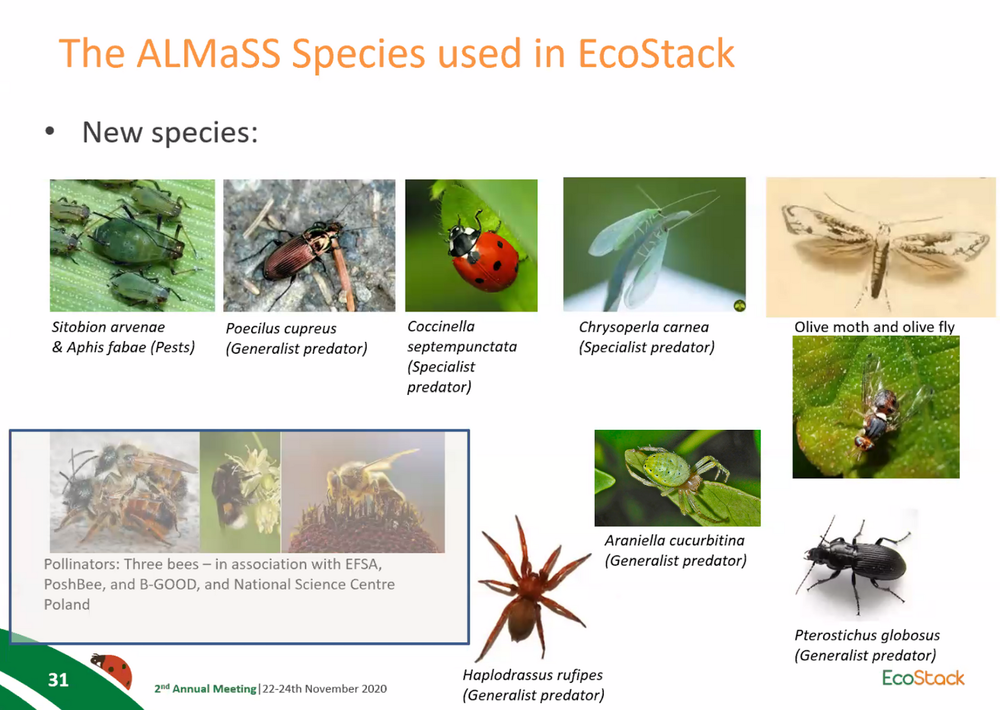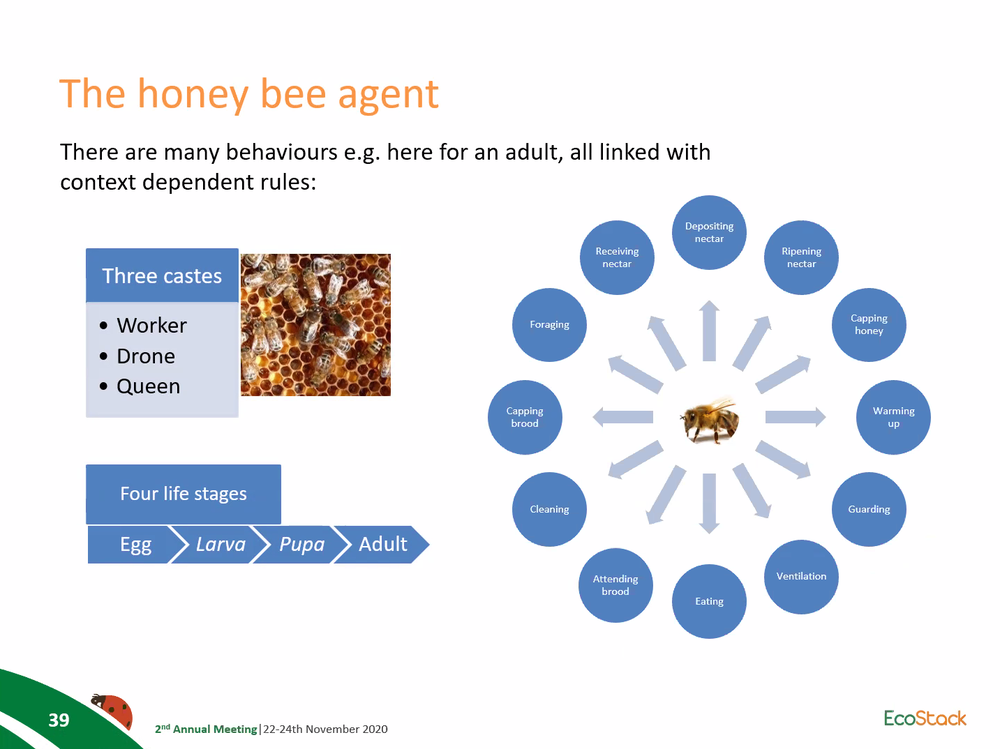Giving Beekeeping Guidance by cOmputatiOnal-assisted Decision making
ALMaSS: Creating detailed landscape models
EcoStack’s second annual meeting took place between 22-23 September 2020. The H2020 project aims to develop and support ecologically, economically and socially sustainable crop production via stacking and protection of functional biodiversity. One topic of discussion during the meeting was the Animal, Landscape and Man Simulation System (ALMaSS) agent-based model system.
ALMaSS models different animal species as individuals (agents), which move around inside a virtual landscape to breed and die much in the same way as the real species do in their natural environment. One type of species used in the model is pollinators.

Photo: A slide from the presentation during EcoStack's 2nd Annual Meeting
The honeybee agent-based model is the most complicated model integrated into ALMaSS. The behaviour of this model depends on the individual bee’s situation and context, as well as on its individual motivation. The adult honey bee agent may exhibit a variety of behaviours (e.g. guarding, eating, cleaning, depositing nectar, capping honey etc.), all linked with context-dependent rules.

Photo: A slide from the presentation during EcoStack's 2nd Annual Meeting
Despite its complexity, ALMaSS offers a highly detailed, realistic and reactive model. The model can integrate landscape context and multiple stressor interactions for a pesticide risk assessment. This landscape generation is providing landscape modelling that will be used in the B-GOOD project. The ALMaSS system forms the basis for a new model for ApisRAM, a honey-bee colony model commissioned by the European Food Safety Authority (EFSA) for use in regulatory risk assessment in Europe. B-GOOD contributes Belgian and UK landscapes to ALMaSS, as well as the flower resource model for bees incorporating information on climate and management practices to create digital phenological maps of pollen and nectar resources for major land-use types important for bees across the EU. ALMaSS/ApisRAM supported by B-GOOD inputs will provide a key resource for assessing impacts of stressors on health status and are crucial for sustainable beekeeping.